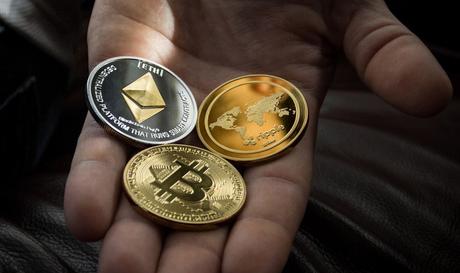Understanding how outside influences lead to an uptick in value for cryptocurrencies is something of an educated guessing game with roots in traditional financial markets and speculation-based trading. Just as speculation trading often manifests in high-risk investments with a hope for future profit, a failure to understand contributing factors to crypto’s price fluctuations can make it just as uncertain an investment as buying random startup stocks.
Thankfully, there are tangible signs that can predict a potential change in a currency’s value. Whether it’s as simple as a market-correcting investment or as cryptic as a gentle societal shift towards more positive reception of a cryptocurrency, there are almost always signs that can be picked up on if you keep an eye out for them.
The simplicity of supply and demand

Chances are you’re already well acquainted with the basics of supply and demand and those basic prospects are still very much in effect, leading to a straightforward example of what causes a cryptocurrency to increase in value. Bitcoin is worth a certain amount of money based on how much fiat currency is invested into the platform versus how many coins are available to be traded, which sets up its basic supply and demand pipeline.
The spanner in the works comes with the supply cap applied to many currencies, which introduces an artificial cap on how many tokens are allowed to exist at one time. Bitcoin, for example, is slowly approaching its supply cap and will soon top out at 21 million existing coins, after which no more new coins will be introduced to the marketplace.
Standing starkly against real life supply and demand issues, cryptocurrencies of this variety do not face the eventuality of a governing body introducing more currency to balance or inflate a marketplace. Instead, the concept of the market cap begins to show its influence.
National currencies become cryptocurrency caps
When a fiat currency is used to purchase cryptocurrency, that cryptocurrency suddenly becomes backed by a financial investment that is shored up by a governing body; After all, that money doesn’t simply disappear, but rather add to the currency’s market cap. While it isn’t quite the same as a currency being backed by something tangible, it does bring value to a market and a sense that there is money involved in the system rather than a randomly-fluctuating series of numbers that see no correlation to the real world.
Sometimes these cash injections are a part of buyback scenarios in which an organisation puts money into a cryptocurrency to remove that amount of currency from the market, which further lowers demand below supply caps while still leaving money in the system. This only contributes to speculation and potential fluctuations caused by a cryptocurrency’s public image.
Publicity brings attention, attention brings fluctuations

If Bitcoin went through its lifespan without catching the eye of those with an interest in decentralised currencies, there wouldn’t be $124 billion invested in it as of the time of this writing. It’s not quite as simple as discussing the merits of a currency but rather a combination of public image and speculation caused by real-world events.
Sometimes those events aren’t as easy to predict as political summits between countries or a renewed interest from financial firms looking to open their doors to cryptocurrency trading. A rather wildcard event that could have led to a Bitcoin surge was partially attributed to Bitcoin being declared technically halal by at least one expert, which may or may not have led to a sudden rush from Muslim investors who held off due to religious reasons.
Others have pointed out other factors, like a blockchain-based payment service and the coming end of selling coins for tax reasons. With that many factors stacking up at all once it’s hard to say exactly which event gave the biggest boost or whether certain events had any tangible effect at all.
Events of a political nature paired with advances in technology and newly found public acceptance make pinning down what causes a cryptocurrency to increase in value something of a future predicting act without the aid of a crystal ball or an easily-captivated audience. When price spikes push short-term speculators out and news of a new market breaks at roughly the same time, analysing both data sets and the buzz produced by those events can theoretically jump prices beyond the total impact those news pieces would have on their own.
Much like any other market, the world of cryptocurrency has a volatility that can be turned on its head from one day to the next without much in the way of advance warning. Market and supply caps work to keep prices at a reasonable level, yet any small change in public perception or availability can cause spikes that are difficult to predict and even harder to capitalise on. Simple supply and demand knowledge can help smooth out some uncertainties, but living through an age of unprecedented growth and development will always have its ups and downs.

